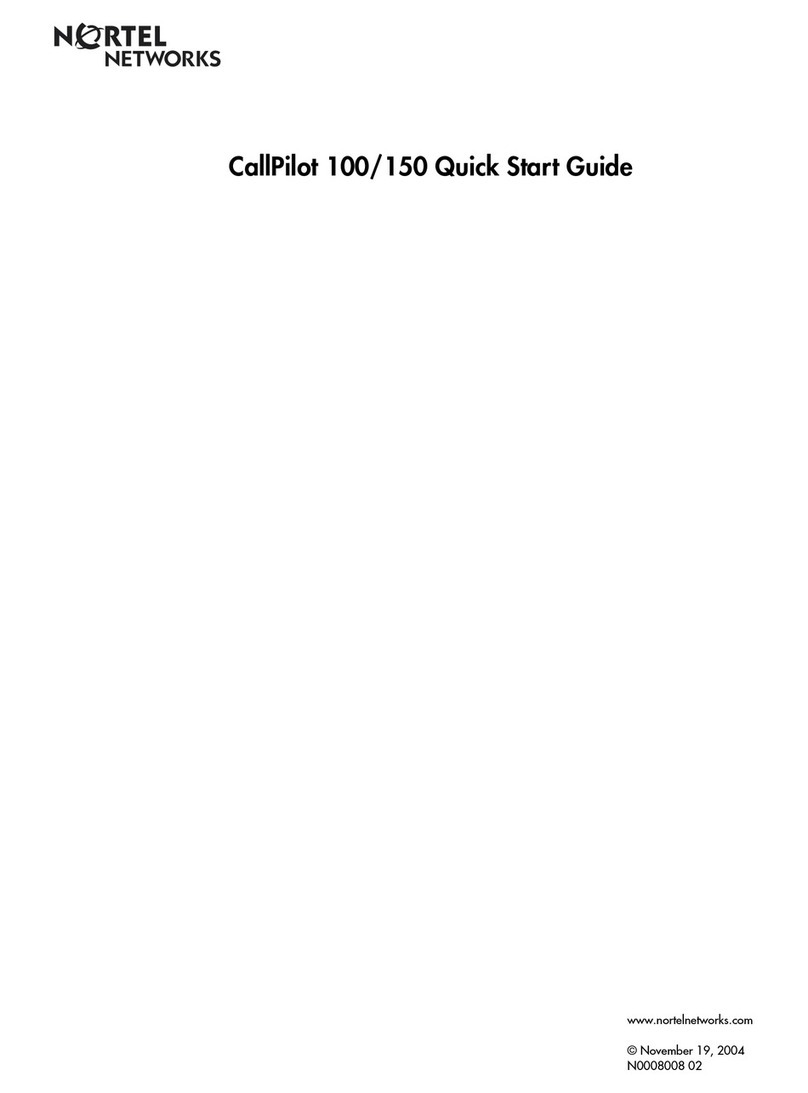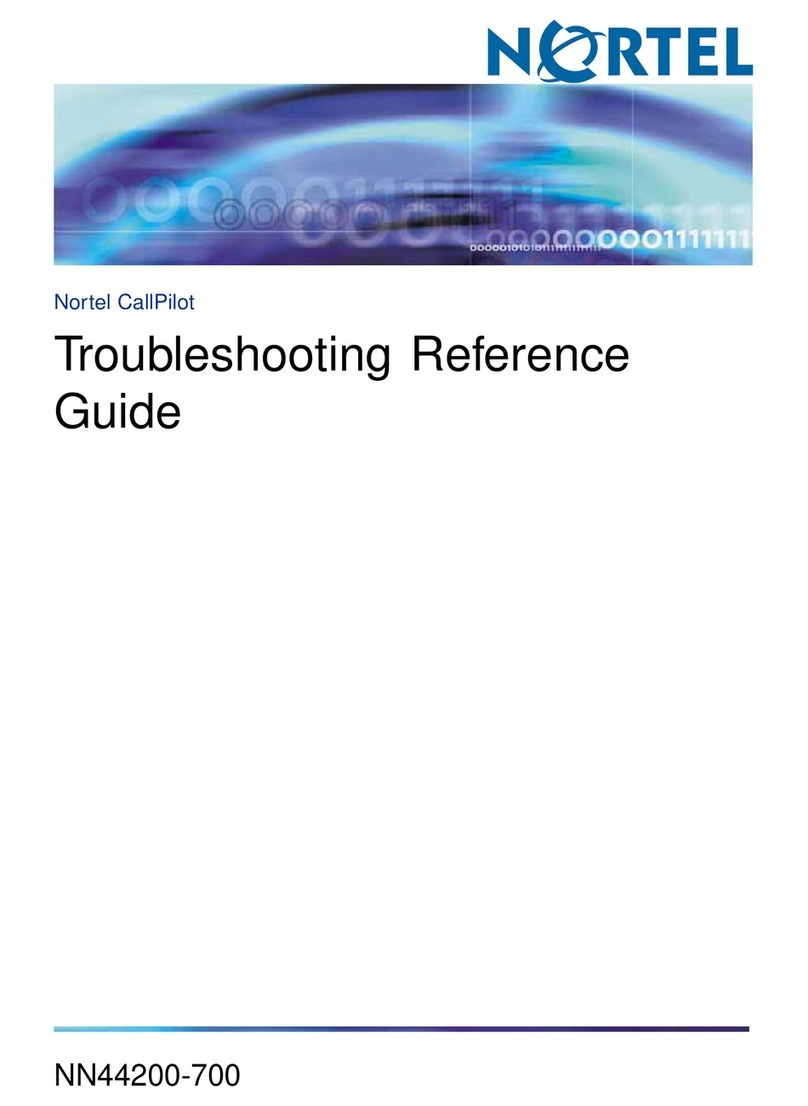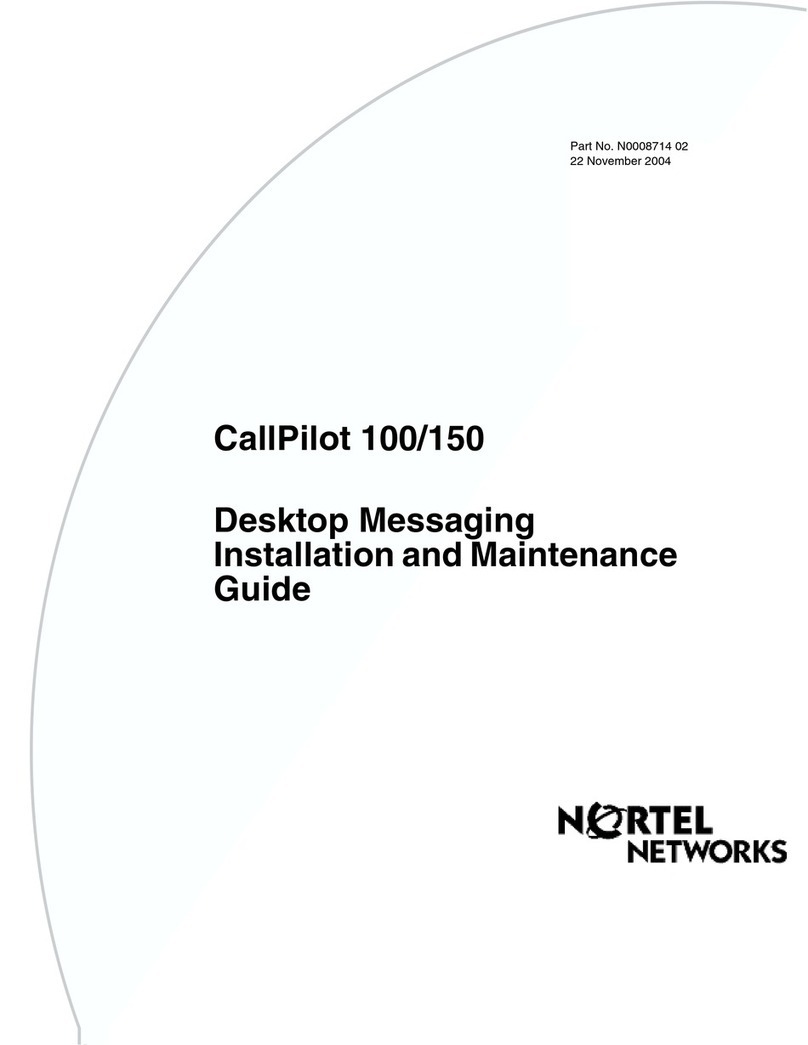
DMS-100 Family Alarm System Description Reference Manual BASE12
DMS-100 Family
Alarm System Description
Reference Manual
1980, 1984, 1985, 1987, 1992, 1999 Northern Telecom
All rights reserved
Printed in the United States of America
NORTHERN TELECOM CONFIDENTIAL: The information contained in this document is the property of Northern
Telecom. Except as specifically authorized in writing by Northern Telecom, the holder of this document shall keep the
information contained herein confidential and shall protect same in whole or in part from disclosure and dissemination to third
parties and use same for evaluation, operation, and maintenance purposes only.
Information is subject to change without notice. Nortel Networks reserves the right to make changes in design or components
as progress in engineering and manufacturing may warrant.
This equipment has been tested and found to comply with the limits for a Class A digital device pursuant to Part 15 of the FCC
Rules, and the radio interference regulations of Industry Canada. These limits are designed to provide reasonable protection
against harmful interference when the equipment is operated in a commercial environment. This equipment generates, uses
and can radiate radio frequency energy and, if not installed and used in accordance with the instruction manual, may cause
harmful interference to radio communications. Operation of this equipment in a residential area is likely to cause harmful
interference in which case the user will be required to correct the interference at the user’s own expense.
The SL-100 system is certified by the Canadian Standards Association (CSA) with the Nationally Recognized Testing Laborato-
ry (NRTL).
This equipment is capable of providing users with access to interstate providers of operator services through the use of equal
access codes. Modifications by aggregators to alter these capabilities is a violation of the Telephone Operator Consumer
Service Improvement Act of 1990 and Part 68 of the FCC Rules.
DMS
,
MAP, NORTEL, NORTEL NETWORKS, NORTHERN TELECOM, NT,
and
SUPERNODE
are trademarks of Nortel
Networks Corporation.
Publication number: 297–1001–122
Product release: BASE12
Document release: Standard 06.01
Date: August 1999































